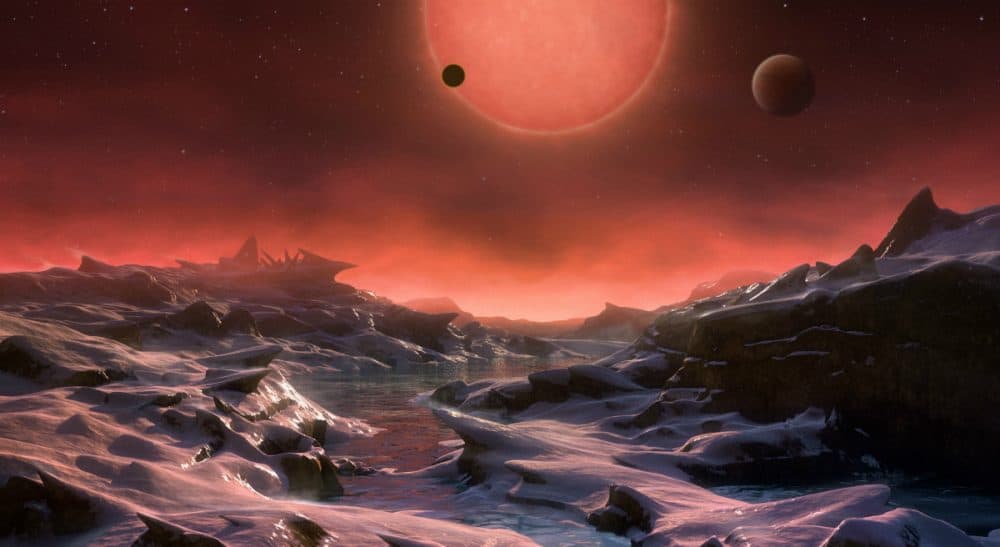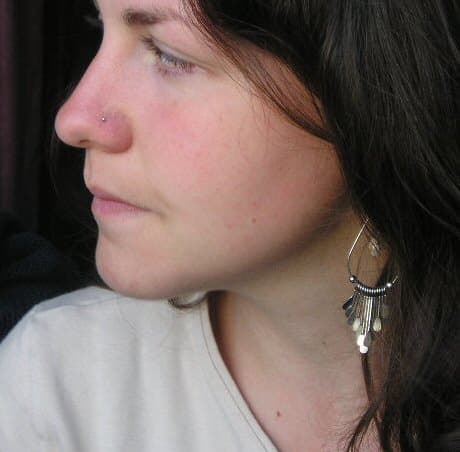Advertisement
Studying 'Ultra-Cool' Stars In The Search For Extraterrestrial Life

With all the recent talk about going to Mars, it’s easy to forget about the infinite number of planets out there that might harbor alien life and/or be suitable to human life. In an article recently published online in Nature, researchers from around the world, including both NASA and MIT, announced their findings of three Earth-like planets revolving around an “ultra-cool” dwarf star 40 light years away. (For reference, one light year is approximately 5.88 trillion miles.)
“Ultra-cool” doesn’t denote style or swagger, but rather, cooler temperatures—for a star, anyway. Ultra-cool dwarf stars are smaller, dimmer and are harder to spot for orbital telescopes such as KEPLER, which has such a huge field of vision that it can monitor over 145,000 stars at once. Ultra-cool dwarf stars wouldn’t stand out in such a view, and trying to single them out could be a painstaking and even fruitless search. Given the resources necessary (and the general lack of resources when it comes to space exploration), studying these stars has historically seemed akin to tilting at windmills—until now.
Neil deGrasse Tyson argues that humans may not be intelligent enough for aliens to contact. We also might not recognize extraterrestrial life even if we did stumble upon it.
Thanks to the TRAnsiting Planets and PlanetesImals Small Telescope (TRAPPIST) located in La Silla, Chile, and operated by the European Southern Observatory, this task is now manageable. The 23-inch robotic telescope first started surveying the skies in 2010, looking for exoplanets by measuring what’s called “brightness dips,” the decreasing luminescence of a star that results from a planet passing in front of it.
While KEPLER can find more potentially habitable planets—it’s now confirmed 1,041 planets—they’re usually so far away that scientists can’t do much more than announce that the worlds exist. It is next to impossible to get additional information about what, if anything, might inhabit those worlds, and what the specific conditions might be.
The star that TRAPPIST found, now referred to as TRAPPIST-1, is a part of the Aquarius constellation and has been around for at least 500 million years, and perhaps (much) longer. Its radius is 12 percent of the sun, and its mass is 8 percent. Scientists used to think that suns had to be as massive as ours in order to produce Earth-like worlds, but we now know this to be false.
The scientists identified three potentially habitable planets within TRAPPIST-1’s orbit. The planets are all far closer to the star than Earth is to the sun, and the two closer planets experience two and four times as much radiation as Earth does, which may render them uninhabitable. However, scientists believe it’s possible that these two planets are tidally locked, meaning that they don’t rotate like Earth does. One side of the planet might face the star all the time, leaving the other side to face away, fostering cooler temperatures and less radiation. It’s unclear yet whether the third planet’s temperature and stellar radiation levels would allow for life.

Scientists plan to use TRAPPIST to observe the planets more closely, looking for the characteristics that allow life to flourish on Earth, such as an atmosphere and the presence of water. Other telescopes will join the search for water and life on these worlds. Just because a planet is habitable doesn’t mean it’s actually inhabited, though, so we may have some answers sooner than others.
The TRAPPIST triumph may also help provide explanations for the Fermi Paradox, which argues that although it’s likely that intelligent life exists somewhere out there (especially when one considers that Earth is relatively young in the grand scheme of things), we still haven’t found any evidence of that life. Perhaps our technology isn’t sophisticated enough yet to bridge intergalactic divides. Or, as TRAPPIST preliminarily suggests, perhaps we’ve been looking in the wrong places—or to be more accurate, overlooking the right ones.
The question of whether we’re alone in the universe is one some scientists believe we’ll answer... What happens after that is anyone’s guess.
Of course, there are other possibilities, too. Neil deGrasse Tyson argues that humans may not be intelligent enough for aliens to contact. We also might not recognize extraterrestrial life even if we did stumble upon it. Extraterrestrial life may not look anything like terrestrial life, and perhaps using our own carb-aqueous criteria limit our conception of life in the cosmos.
One mind-blowing possibility raised by astronomer Susan Schneider is that we’re looking for biological life when perhaps aliens who have achieved technological feats we’ve never even dreamed of have gone “post-biological.” Science fiction has long entertained us with plots about mind-uploading, cyborgs and life in virtual reality. If extraterrestrial life has been able to realize such possibilities, thereby achieving their own “technological singularity,” then perhaps the presence or absence of carbon, water and biological signatures doesn’t mean what we think it means. Regardless, we will keep looking. The question of whether we’re alone in the universe is one some scientists believe we’ll answer definitively in the next century, in the next 25 years, or even sooner. What happens after that is anyone’s guess.
